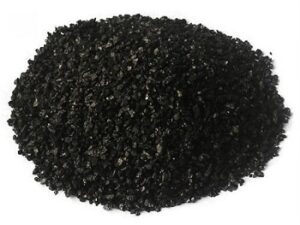Description
Activated Carbon: The Key Weapon in the Fight Against Hydrogen Sulfide
Hydrogen sulfide (H₂S), a colorless gas with a characteristic rotten egg odor, is not just unpleasant; it’s a significant threat to human health, infrastructure, and the environment. From wastewater treatment plants to oil and gas operations, H₂S is a common byproduct of industrial processes and anaerobic decomposition. Fortunately, there’s a versatile and effective solution for its removal: activated carbon.
Why is H₂S Removal Crucial?
The dangers of H₂S are multifaceted:
- Health Hazards: Even low concentrations can cause irritation to the eyes, nose, and throat. Higher concentrations can lead to respiratory problems, unconsciousness, and even death.
- Corrosion: H₂S is highly corrosive to metals, especially in moist environments. This leads to the deterioration of pipelines, equipment, and infrastructure, resulting in costly repairs and replacements.
- Environmental Concerns: H₂S contributes to acid rain and can negatively impact aquatic ecosystems.
- Odor Nuisance: The pungent odor of H₂S can cause significant discomfort and complaints from surrounding communities.
Activated Carbon: The Solution
Activated carbon is a highly porous material with an exceptionally large surface area. This vast surface area allows it to effectively adsorb a wide range of gaseous and liquid contaminants, including H₂S. The process of adsorption involves the H₂S molecules adhering to the surface of the activated carbon, effectively removing them from the surrounding environment.
How Activated Carbon Works for H₂S Removal
The effectiveness of activated carbon in removing H₂S stems from several key factors:
- High Surface Area: The immense surface area of activated carbon provides numerous adsorption sites for H₂S molecules.
- Pore Size Distribution: Activating carbon with a controlled pore size distribution optimizes its ability to capture H₂S molecules of varying sizes.
- Chemical Impregnation (Optional): In some applications, activated carbon is chemically impregnated with substances like potassium hydroxide (KOH) or sodium hydroxide (NaOH). These chemicals react with H₂S, converting it into less harmful compounds and enhancing the carbon’s removal capacity. This process is often referred to as chemisorption.
Types of Activated Carbon Used for H₂S Removal
Various types of activated carbon can be used for H₂S removal, each with its own characteristics and suitability for specific applications:
- Powdered Activated Carbon (PAC): Typically used in liquid phase applications, PAC is added directly to the stream containing H₂S.
- Granular Activated Carbon (GAC): Commonly used in packed bed adsorbers or filters for both air and liquid treatment.
- Extruded Activated Carbon: Offers high mechanical strength and is often used in demanding applications.
Applications of Activated Carbon for H₂S Removal
Activated carbon finds widespread use in various industries and applications where H₂S is a concern:
- Wastewater Treatment: Removing H₂S from wastewater streams to prevent odor problems and protect downstream equipment.
- Oil and Gas Industry: Treating natural gas and biogas to remove H₂S, making them safe for pipeline transportation and combustion.
- Landfill Gas Treatment: Removing H₂S from landfill gas to improve its quality for energy generation.
- Pulp and Paper Industry: Controlling H₂S emissions from process operations.
- Air Purification: Removing H₂S from ambient air in industrial settings and sewage treatment plants to protect workers and the environment.
Advantages of Using Activated Carbon
- High Efficiency: Activated carbon can effectively remove H₂S to very low concentrations.
- Versatile: Applicable in various industries and treatment scenarios.
- Cost-Effective: Compared to alternative technologies, activated carbon can be a more economical solution.
- Environmentally Friendly: Activated carbon is a natural and sustainable material. Spent activated carbon can sometimes be reactivated or disposed of responsibly.
Conclusion
Activated carbon plays a vital role in mitigating the harmful effects of hydrogen sulfide. Its high adsorption capacity, versatility, and cost-effectiveness make it a preferred choice for H₂S removal in various industries. As environmental regulations become stricter and concerns about public health intensify, the demand for activated carbon for H₂S removal is expected to continue to grow, solidifying its position as a crucial technology in ensuring a cleaner and safer environment.









Reviews
There are no reviews yet.